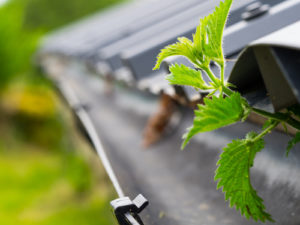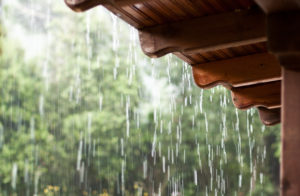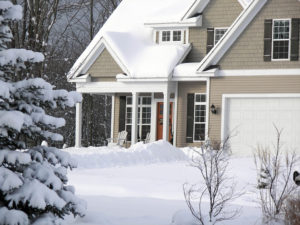In the 21st century, when technology attempts to solve our problems, are rain barrels a plausible solution for watering your lawn or garden? The answer depends on several factors.
First, does your municipality allow this method of water storage? While many cities and towns have turned to this ecological method of water conservation, others have a ban on them. This can be due to previously enacted laws or environmental issues. If this is the case, their use for watering is a moot point unless you get special permission.
However, if you are permitted to use this method, the next thing to determine is if it’s feasible for your property. For this answer, you need to:
- Determine its size: A ¼-acre lot or smaller can be successfully irrigated with a rain barrel system. Their effectiveness for lots larger than a ½-acre is questionable.
- Estimate the size of the rain barrel needed: A standard-sized rain barrel is 50 gallons. However, you can use something smaller if your yard isn’t large.
- Determine what you are watering: Is it just the lawn, the garden, or a combination of both? If it’s only lawn, and you have a large lot, consider replacing some of the turf with a garden or hardscape such as a patio.
- Determine the garden’s placement.
Why Clean Gutters are Important
The water will accumulate from rain or snow melt and the next step is to ensure the collected water is clean. It will hit the roof and gutters first, then flow into the downspout connected to the barrel.
If you have a leaf free gutter system like the one made by K-Guard, the water’s potability won’t be a problem. Since the only thing that can get in is water, what is delivered to the barrel is already clean.
If you haven’t cleaned the gutters in a while, or there’s a clog at the downspout, what gets into the barrel could be contaminated. Contamination is not caused by leaves and other natural debris, but from animal waste material that lands in the gutter or on the leaves.
If this happens, three things need to take place. First, the rain barrel water must be treated or disposed of to prevent spreading disease to your lawn and/or garden.
Second, clean the gutters! You’ll need a professional to blast them clean and disinfect them in a non-caustic manner.
The third thing to do is cover the gutters. No matter how clean they are, the first gusty storm will send debris back into the channels.
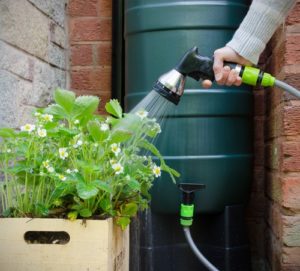 Distributing the Water
Distributing the Water
When you know the water is clean, determine the best way to distribute it from the barrel to the plants. Opening up a spigot on the bottom and letting it flow may “drown” grass and plants. In addition, puddled water could attract mosquitoes.
What is needed is an irrigation system, and there are a few ways to make this happen. The simplest is with a gravity-flow system. Hook a line- or multiple lines – to the barrel and slowly release the water. As long as it has somewhere to go, it will seep downward to its destination. If your lawn is somewhat flat, the maximum distance the water will flow is approximately 25 feet.
Another way to distribute the rain barrel contents is the same way you would run a sprinkler system – with a timer. This can work on a single or multiple barrel system. Connect a timing device to a release mechanism. At a specific time of day, preferably in the early morning or after sunset, the slow drip process begins to irrigate your plants.
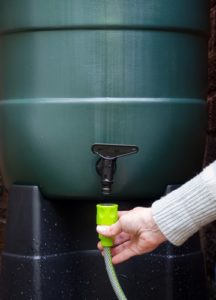 Problems with Rain Barrels
Problems with Rain Barrels
While economical and natural, there are some downsides to rain barrel irrigation. We already mentioned one above – clogged or dirty gutters which can contaminate the collected water.
Another downside is their dependence on weather. One year may present you with an abundance of water while the next year may provide you with little. In drier years, particularly if you are living “off-the-grid,” a choice has to be made about usage. Should it still be used for irrigation or for items like drinking water and bathing?
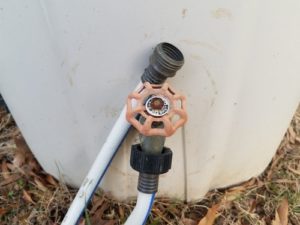 Now What?
Now What?
That’s up to you. As long as your town allows it, consider starting with one barrel. If it works, then you can expand to a multi-barrel system. It’s best not to heavily invest in a system before you know if it works for you.
Regardless, make sure your gutters are clean and ready for rain water distribution. For those who feel it’s not worth the effort or cost to clean them, consider installing a K-Guard leaf-free gutter system. Once it’s installed, perhaps you’ll decide on a rain barrel irrigation system after all.


